You know that comforting aroma of a freshly baked meatloaf? It’s a classic for a reason. But let’s be honest, sometimes the thought of cooking one can seem a bit daunting. It’s one of those dishes that we associate with our mums, and we might think we need some secret recipe passed down through generations to get it right. But trust me, you don't need a culinary degree to create a delicious meatloaf! In fact, it's pretty simple once you understand the basics.
I'm here to demystify the process, guide you through the magic of 350 degrees, and help you figure out that perfect cooking time. I'll also share some personal tips and tricks I've picked up over the years, so you can create a meatloaf that even your mum would be proud of. Let's get started!
(Part 1) The Meatloaf Myth: It's Simpler Than You Think
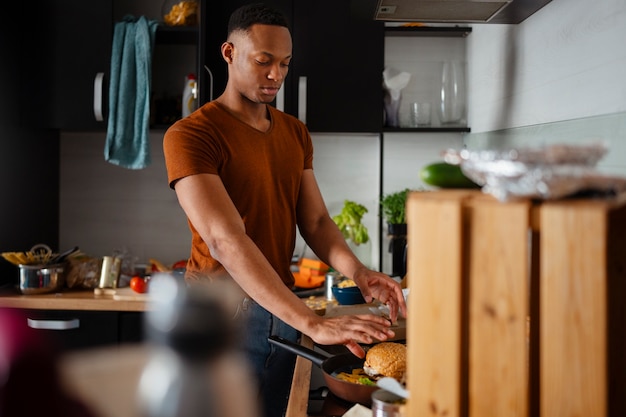
For years, I thought meatloaf was a dish reserved for culinary wizards. I'd see those fancy recipes with a million ingredients and complicated techniques, and I'd think, "No way, I could never pull that off." But then, I realized something quite obvious: meatloaf is just ground meat, shaped into a loaf, and baked! It's surprisingly simple, and that's where the fun begins.
So, let's dispel that myth right now. You don't need to be a professional chef to bake a fantastic meatloaf. All you need is a good recipe, a willingness to learn, and a bit of patience. I promise you, it's much more satisfying than you imagine.
The Simplicity of a Classic
Think about the essential ingredients: ground beef, breadcrumbs, eggs, onions. They are staples in most kitchens, forming the foundation of a delicious meatloaf. There’s a certain charm in using simple ingredients to create something so flavourful and satisfying.
Embracing Experimentation
Don’t get me wrong, you can definitely get creative and add your own twist to a classic meatloaf. That's part of the fun! Maybe you want to add some chopped mushrooms or bell peppers for extra texture and flavour. Or, you could incorporate a handful of dried herbs like rosemary or thyme for a more aromatic experience. The beauty of meatloaf lies in its versatility. You can tailor it to your own tastes and preferences, making it truly your own.
(Part 2) The Importance of Oven Temperature: 350 Degrees is the Magic Number
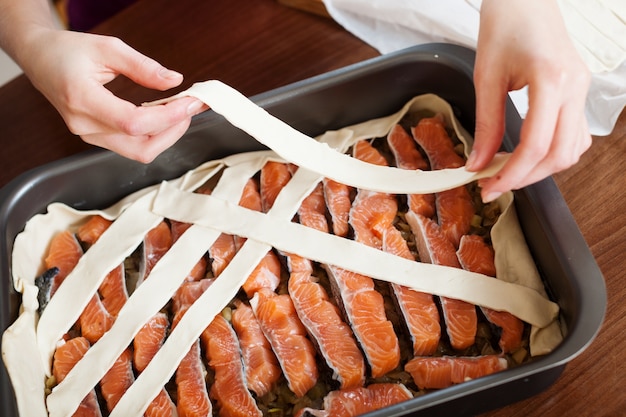
Now, let's talk about the oven. 350 degrees fahrenheit (175 degrees Celsius) is the ideal temperature for baking meatloaf. This temperature ensures that the meat cooks evenly without drying out, creating that beautiful, crispy crust on the outside. While you can experiment with slightly different temperatures, I'd recommend sticking to this range for your first attempt. You can always play around with it later!
Why 350 is the Perfect Temperature
Here's why 350 degrees is the sweet spot: it provides just enough heat to cook the meat thoroughly without making it tough. It's like a gentle embrace, encouraging the meatloaf to reach its full potential. If the temperature is too high, you risk burning the outside before the inside is cooked. Too low, and you’ll end up with a mushy mess. 350 degrees is that perfect balance.
The Science Behind the Heat
Remember, the aim is to cook the meatloaf through and through, ensuring that it’s safe to eat. The heat from the oven is what kills any bacteria in the meat. 350 degrees is the ideal temperature to achieve this without compromising the texture and flavour of your meatloaf. It's a delicate dance between heat and time, and 350 degrees is the perfect rhythm.
(Part 3) Decoding the Cooking Time: A Guide to Baking Perfection
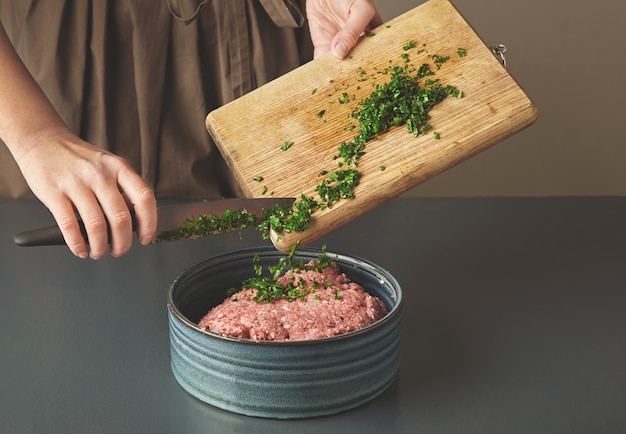
Now, let's get to the heart of the matter: how long do you bake a meatloaf at 350 degrees? There's no one-size-fits-all answer, but I can give you a general guideline. A standard meatloaf, weighing about 2-3 pounds, will take around 1 hour to 1 hour and 15 minutes to cook. However, a few factors can influence cooking time.
Size Matters
The size of your meatloaf is the most significant factor. A larger loaf will take longer to cook than a smaller one. That's why it’s crucial to check the internal temperature of your meatloaf with a meat thermometer. You want it to reach 160 degrees Fahrenheit (71 degrees Celsius) for safe consumption. No matter how tempting it is, don't just rely on visual cues; the thermometer is your trusted guide.
Ingredient Variations
The ingredients you use can also affect cooking time. If you've added lots of vegetables or moisture-rich ingredients, it might take slightly longer for the meatloaf to cook through. This is where that trusty thermometer comes in handy again.
Don't Rush It: Patience is a Virtue
It's tempting to rush the process, but resist that urge! Cooking a meatloaf takes time. Don't try to reduce the baking time to get it on the table faster. Patience is key, and it will be rewarded with a delicious and perfectly cooked meatloaf. Think of it as a slow, deliberate process that allows the flavours to develop and meld together. Let the oven do its magic, and you’ll be rewarded with a truly satisfying meal.
(Part 4) The Art of Meatloaf Mastery: Elevating Your Culinary Game
Now that you've got the oven temperature and general baking time figured out, let's talk about some additional techniques to ensure your meatloaf reaches epic proportions. These are like the secret ingredients that take your meatloaf from good to great.
The Importance of Shaping: A Well-Formed Loaf
First things first, let's talk about shaping. The best meatloaves are well-shaped, with smooth edges and a consistent thickness. It's a good idea to use a loaf pan or a baking dish for this purpose. Shape the meatloaf gently, ensuring that it's not overly packed. This allows the heat to penetrate the meatloaf evenly, resulting in a more consistently cooked loaf.
Don't Forget the Glaze: Adding That Extra Touch
And then, there's the glaze. This is where you can really get creative! A simple glaze can make a world of difference, adding a touch of sweetness and moisture to the meatloaf. Think ketchup, brown sugar, or even a mustard-based glaze. I like to make a simple glaze with ketchup, brown sugar, and a dash of Worcestershire sauce. It's sweet, tangy, and complements the meatloaf perfectly. But you can experiment and find your own perfect glaze!
The Magic of Toppings: Putting the Finishing Touches
Finally, let's talk about toppings. This is your chance to really express your culinary personality! I love to top my meatloaf with a mix of bacon, chopped onions, and bread crumbs. It adds a bit of crunch and extra flavour to the meatloaf. You can also experiment with other toppings like sliced tomatoes, cheese, or even a sprinkle of fresh herbs. The sky's the limit!
(Part 5) Meatloaf and the Power of Patience: Embracing the Journey
Cooking a meatloaf is like a dance, a slow and graceful waltz between heat and time. It's a journey of anticipation and delight, where patience is your most trusted companion. Remember, good things take time, and a perfectly cooked meatloaf is definitely one of those good things.
The Waiting Game: Resisting the Urge to Peek
While the meatloaf bakes, resist the urge to open the oven door every five minutes to check on its progress. Each time you open the door, you lose heat, which can affect cooking time and lead to uneven results. Instead, use the trusty meat thermometer to gauge its internal temperature. Let the oven work its magic without interruption.
The Joy of Patience: Appreciating the Process
Patience, in this case, isn't just about waiting. It's about allowing the meatloaf to transform, to develop its own unique character and texture. It's about trusting the process and appreciating the journey. So, relax, put on some music, and let the oven work its magic. The reward will be well worth the wait.
(Part 6) Signs of a Perfectly Cooked Meatloaf: Recognizing Success
You've patiently waited, the aroma of your meatloaf has been tantalising your senses, and now the moment of truth has arrived. How do you know if your meatloaf is perfectly cooked?
The Tell-Tale Signs: Visual and Textural Cues
Firstly, the meatloaf should be a nice golden brown color on the outside. This indicates that the exterior has caramelized, developing a beautiful crust. Secondly, the internal temperature should reach 160 degrees Fahrenheit (71 degrees Celsius). This ensures that the meatloaf is cooked through and safe to eat. And lastly, the meatloaf should be firm to the touch, but not overly hard.
The Touch Test: A Simple Check
A simple touch test can also give you an indication. If the meatloaf feels springy and rebounds slightly when you press on it, it's likely cooked. But, as always, a meat thermometer is the most accurate way to determine doneness.
(Part 7) meatloaf mistakes and How to Fix Them: Troubleshooting and Recovery
No one's perfect, and even the most seasoned cooks can make mistakes. But fear not, even if you happen to mess up your meatloaf, all is not lost. Here are a few common meatloaf mistakes and how to fix them:
The Dry Meatloaf: Reintroducing Moisture
If your meatloaf is a bit dry, you can add a bit of extra moisture to it. This can be done by adding a little bit of broth, milk, or even a bit of butter to the meatloaf before baking. You can also add a bit of extra sauce to the top of the meatloaf after it's been cooked. This helps rehydrate the meatloaf, restoring some of its lost moisture.
The Overcooked Meatloaf: Saving What You Can
If your meatloaf is overcooked, it's likely to be dry and tough. There's not much you can do to fix this, but you can try adding a bit of extra sauce to the top of the meatloaf to help moisten it up. Next time, try reducing the baking time or lowering the oven temperature. Always err on the side of caution when it comes to cooking time, and you'll reduce the chances of overcooking.
The undercooked meatloaf: Safety First
This is a common mistake, and it's a serious one. Undercooked meatloaf is not safe to eat. If you're unsure whether your meatloaf is cooked through, always err on the side of caution and bake it for a few more minutes. It's better to be safe than sorry. The meat thermometer is your best friend when it comes to determining doneness.
(Part 8) Meatloaf, a culinary adventure: Embracing Creativity and Enjoyment
Cooking a meatloaf isn't just about following a recipe; it's about exploring, experimenting, and discovering new flavour combinations. It's about embracing your creativity and having fun in the kitchen. It's about creating something delicious and satisfying that you can share with the people you love.
The Journey Begins: Take the Plunge
So, go ahead, pick a recipe, gather your ingredients, and embark on your own meatloaf adventure. Don't be afraid to make mistakes, because that's how you learn and grow. And remember, the best meatloaf is the one that you love the most. Enjoy the journey, and happy cooking!
FAQs
Q1: What is the best way to ensure a moist meatloaf?
The key to a moist meatloaf is to add a bit of extra moisture to the mixture. This can be done by using a combination of ingredients like breadcrumbs, milk, eggs, and even a bit of broth. You can also use a glaze to help keep the meatloaf moist while it bakes. And, most importantly, don't overcook it! A meat thermometer will be your best friend in this process.
Q2: What are some alternative ingredients to use in a meatloaf?
The beauty of meatloaf is its versatility. You can experiment with various ingredients to create your unique flavour combinations. For example, you can add chopped mushrooms, peppers, onions, or even a handful of dried herbs to your meatloaf. You can also use different types of ground meat, such as ground pork, ground lamb, or a mixture of different meats.
Q3: How long can I store a leftover meatloaf?
A leftover meatloaf can be stored in the refrigerator for up to 3-4 days. Be sure to wrap it tightly in plastic wrap or aluminum foil to prevent it from drying out. You can also freeze leftover meatloaf for up to 3 months. To reheat, simply place it in the oven at 350 degrees Fahrenheit (175 degrees Celsius) until it's heated through.
Q4: What are some creative ways to serve meatloaf?
Meatloaf is a versatile dish that can be served in a variety of ways. It can be sliced and served as a main course, or it can be crumbled and used in a variety of dishes, like sandwiches, salads, or even pasta. You can also get creative with your toppings. Instead of the traditional ketchup and brown sugar glaze, try a mustard-based glaze, a balsamic glaze, or even a bbq sauce glaze.
Q5: Can I make a meatloaf ahead of time?
Absolutely! Meatloaf is a fantastic dish that can be made ahead of time. You can assemble the meatloaf and refrigerate it overnight. This allows the flavors to meld and makes it easier to bake the meatloaf the next day. Just make sure to bring it to room temperature before baking.
Everyone is watching

How to Cook Frozen Lobster Tails Perfectly: A Step-by-Step Guide
RecipesLobster. Just the word conjures up images of lavish meals, special occasions, and a taste of luxury. But let's...

Pigs in a Blanket Cooking Time: How Long to Bake for Perfect Results
RecipesAh, pigs in a blanket. Just the name conjures up images of those delightful little parcels of crispy pastry en...

Pork Fillet Cooking Time: How Long to Cook It Perfectly
RecipesPork fillet, or tenderloin as it's sometimes called, is a real favourite in our house. It's so versatile, and...
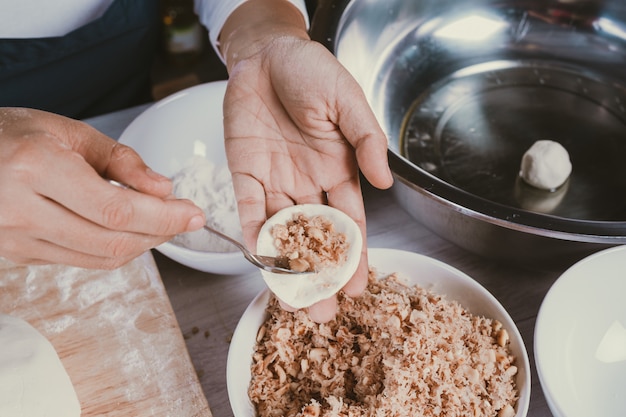
The Ultimate Guide to Tender, Juicy Pulled Pork
RecipesRight, let's talk pulled pork. It's one of those dishes that just screams "comfort food," doesn't it? I mean...
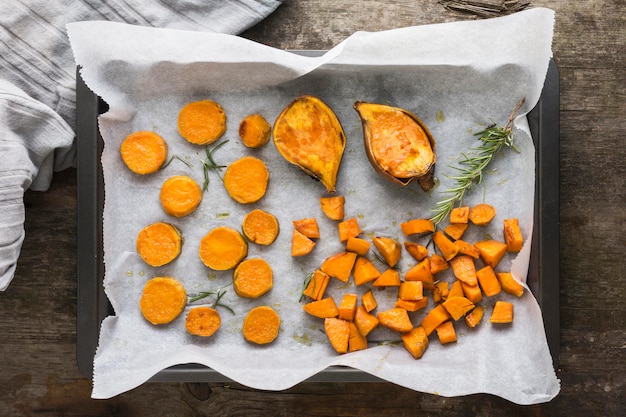
The Ultimate Guide to Cooking Sweet Potatoes: From Roasting to Mashing
RecipesSweet potatoes. Just the name conjures up images of warm, comforting dishes, bursts of vibrant color, and a to...
